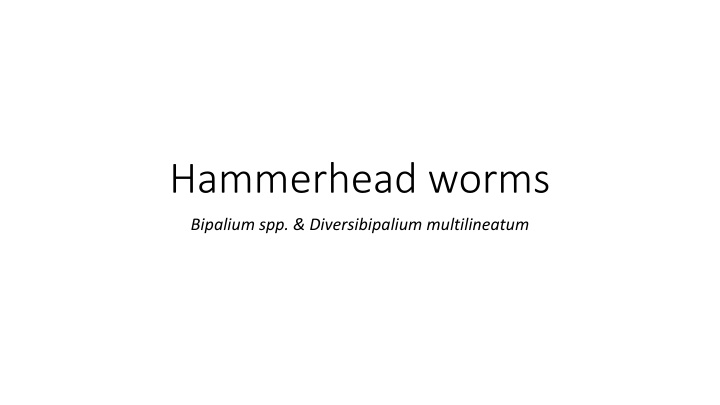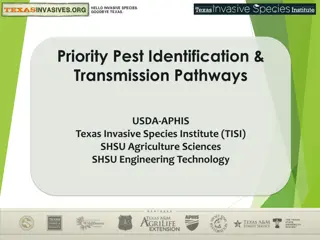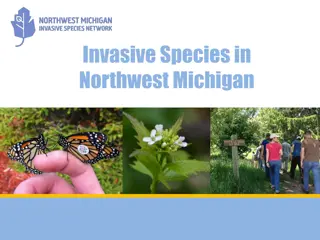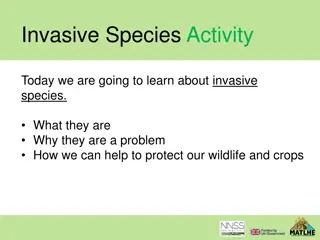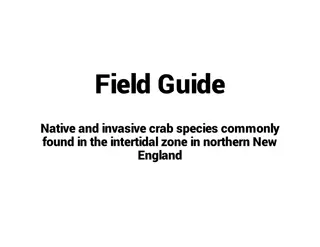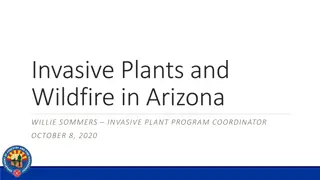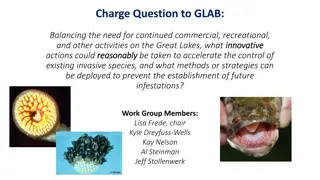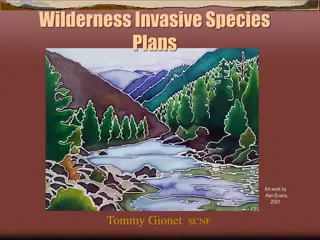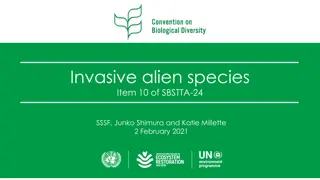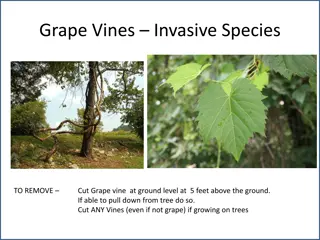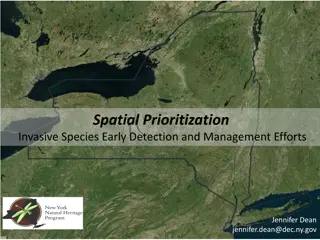Hammerhead Worms: Invasive Species Identification and Overview
Invasive terrestrial flatworms known as Hammerhead Worms, including species like Bipalium spp. and Diversibipalium multilineatum, have been introduced to various regions, likely through soil or potted plants. Five invasive species have been identified, each with distinct characteristics and sizes. While there are no documented economic impacts, these worms can be found in different states, with variations in color and stripe patterns. Detailed descriptions and images provide insights into identifying these species.
Download Presentation

Please find below an Image/Link to download the presentation.
The content on the website is provided AS IS for your information and personal use only. It may not be sold, licensed, or shared on other websites without obtaining consent from the author.If you encounter any issues during the download, it is possible that the publisher has removed the file from their server.
You are allowed to download the files provided on this website for personal or commercial use, subject to the condition that they are used lawfully. All files are the property of their respective owners.
The content on the website is provided AS IS for your information and personal use only. It may not be sold, licensed, or shared on other websites without obtaining consent from the author.
E N D
Presentation Transcript
Hammerhead worms Bipalium spp. & Diversibipalium multilineatum
Overview Invasive terrestrial flatworm Five invasive species Bipalium adventitium is native to Asia B. kewense is native to Asia B. pennsylvanicum s native range is unknown B. vagum s native range is unknown Diversibipalium multilineatum is native to Japan They were likely introduced in as hitchhikers in soil, potted plants, etc. No published studies documenting economic impacts except in earthworm rearing beds
Identification B. adventitium 2-4 inches B. kewense 8-11 inches B. pennsylvanicum 3 inches B. vagum 1.4 inch Diversibipalium multilineatum 6-8 inches Rebekah D. Wallace, University of Georgia, Bugwood.org
Head B. adventitium 2-4 in. (5-10 cm) long Yellow-tan with a brown dorsal line Ventral side pale and without stripes The head is fan-shaped may have a brown-grey edge that fades towards the body Present in most northern states *Colors and stripe visibility may vary Rebekah D. Wallace, University of Georgia, Bugwood.org
Head B. kewense 8-11 in. (20-30 cm) long Light brown with five dorsal stripes, the two lateral stripes are grey, and two grey-violet ventral stripes Neck has an incomplete black collar Head is grey-black and fan-shaped Present in the southern states *Colors and stripe visibility may vary Rebekah D. Wallace, University of Georgia, Bugwood.org
Head B. pennsylvanicum 3 in. (8 cm) long Yellow-brown with three dorsal stripes Two outside lines thicker than the middle stripe Ventral side pale and without stripes Head is brown and fan-shaped Known to be present in Northeast states *Colors and stripe visibility may vary Rebekah D. Wallace, University of Georgia, Bugwood.org
Head B. vagum 1 in. (2.5 cm) long Light brown with three dorsal stripes Middle is black and two outside are brown Ventral side pale and without stripes Head is fan-shaped, black and brown, and black neck collar May have a black tail Present in Gulf Coast and some Atlantic states *Colors and stripe visibility may vary Rebekah D. Wallace, University of Georgia, Bugwood.org
Head Diversibipalium multilineatum 6-8 in. (15-21 cm) long Yellow-tan with five dark brown dorsal stripes Middle stripe extends into the head and ends in a thicker stripe Lines extend slightly into the lower arch of the head Ventral side has three dark lines that don t extend into the head The head is fan-shaped may have a brown edge that fades towards the body Present in Mid-Atlantic states *Colors and stripe visibility may vary
More Info B. adventitium and B. kewense are toxic (tetrodotoxin) to small animals when eaten Species can reproduce asexually (via fragmentation) or sexually (all are hermaphroditic) Eats worms and mollusks using mouth in the middle of its body Found in leaf litter, under rocks, and wet areas. After heavy rains they are found on sidewalks, driveways, etc.
